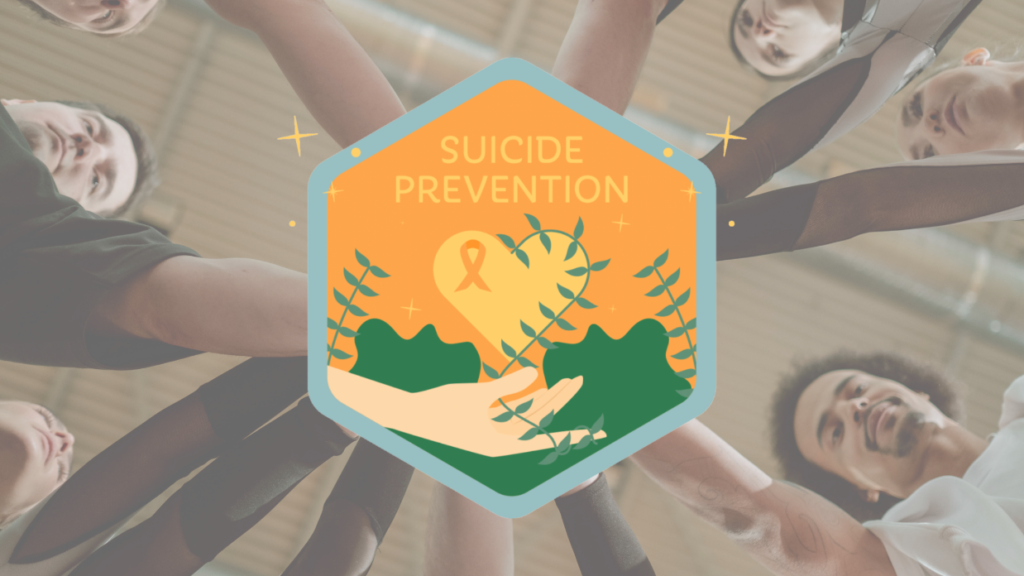
World Suicide Prevention Day is observed on September 10th each year. It was first observed in 2003 and is organised by the International Association for Suicide Prevention (IASP) in collaboration with the World Health Organization (WHO). The day aims to raise awareness about suicide prevention, reduce stigma, and encourage global action to reduce the incidence of suicide.
The International Association for Suicide Prevention (IASP) has unveiled a powerful theme for World Suicide Prevention Day (WSPD) 2024-2026: “Changing the Narrative on Suicide.” This theme calls for a significant shift in how we talk about suicide, moving away from stigma and silence towards openness, understanding, and proactive prevention. As part of this initiative, IASP urges everyone to take action with the message: #Start the Conversation. This encourages people—whether individuals, communities, organizations, or governments—to openly discuss mental health and suicide. These conversations are vital for breaking down barriers, raising awareness, and creating a culture of support.
THE GROWING CRISIS IN INDIA: STUDENT SUICIDES
“India’s student suicide rate has surpassed overall trend, population growth rate” – The Hindu
The National Crime Records Bureau (NCRB) data, the ‘Student suicides: An epidemic sweeping India’ report was released on August 28, 2024, at the Annual IC3 Conference and Expo 2024.
Incidents of student suicides in India have been increasing at an alarming rate, outpacing both population growth and overall suicide trends. The report highlighted that while the overall suicide rate grew by 2% annually, student suicides surged by 4%.
The states with the highest rate of student suicides are Madhya Pradesh, Tamil Nadu, and Maharashtra. Rajasthan, renowned for its demanding academic environment, ranks 10th, highlighting the intense pressure associated with coaching hubs like Kota.
Note: The NCRB data is based on police records, but the true number of student suicides is likely higher due to underreporting.
KEY ISSUES CONTRIBUTING TO STUDENT SUICIDES
Several critical issues contribute to the high rate of student suicides in India:
- Academic Pressure: The intense pressure to excel in exams, secure admissions to prestigious institutions, and meet parental expectations can be overwhelming for many students.
- Mental Health Stigma: Mental health issues like depression and anxiety often go unrecognized or are dismissed due to the stigma surrounding mental illness. Many students suffer in silence, afraid to seek help.
- Lack of Access to Mental Health Services: Despite growing awareness, access to mental health services remains limited, especially in rural areas. There is also a shortage of mental health professionals in India.
- Bullying and Peer Pressure: Social dynamics in schools and colleges, including bullying and the pressure to meet peer expectations, can contribute to feelings of isolation and worthlessness.
- Uncertain Future Prospects: The fear of unemployment or underemployment after completing education adds to the stress students face, particularly in a competitive job market and uncertain economy.
ADDRESSING THE CRISIS: ALARMING NEED FOR A SUPPORTIVE ENVIRONMENT
Addressing the issue of student suicides and the global issue of suicide cases in general requires a multi-faceted approach involving various stakeholders, including educational institutions, government bodies, parents, and mental health professionals.
- Mental Health Education: Incorporate mental health education into school curricula to help students recognize distress and seek help.
- Accessible Counseling: Ensure counselling services are available, including 24/7 helplines and online platforms for immediate support.
- Parental and Teacher Training: Train parents and teachers to recognize mental health issues and reduce academic pressure.
- Positive School Environment: Foster a safe and supportive atmosphere with anti-bullying policies, peer support groups, and extracurricular activities.
- Policy Reforms: Prioritize mental health in government policies and reform exam systems to reduce academic stress.
A CALL TO ACTION
These strategies are foundational but crucial. While they may seem basic, they are essential starting points. The rising rate of student suicides in India is a stark reminder of the urgent need for comprehensive action. By addressing the root causes—academic pressure, mental health stigma, and lack of support systems — and taking these steps, we can begin to address the crisis and create a safer, more supportive environment for our students.
Preventing suicide is not just the responsibility of mental health professionals; it is a collective responsibility that requires action at all levels of society. So, this World Suicide Prevention Day, let’s commit to ‘Changing the Narrative on Suicide’ and together let’s #StartTheConversation.
Blog By : DEEBHA SITHTA

